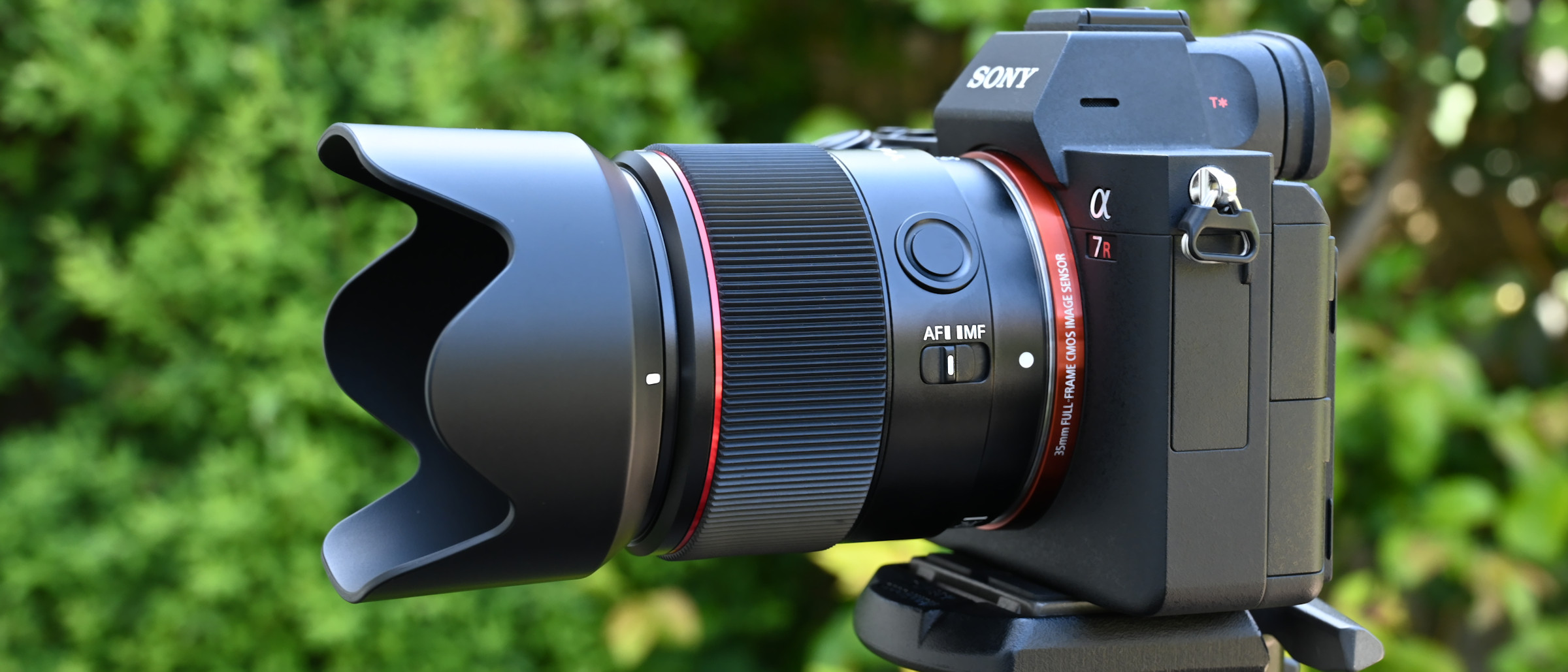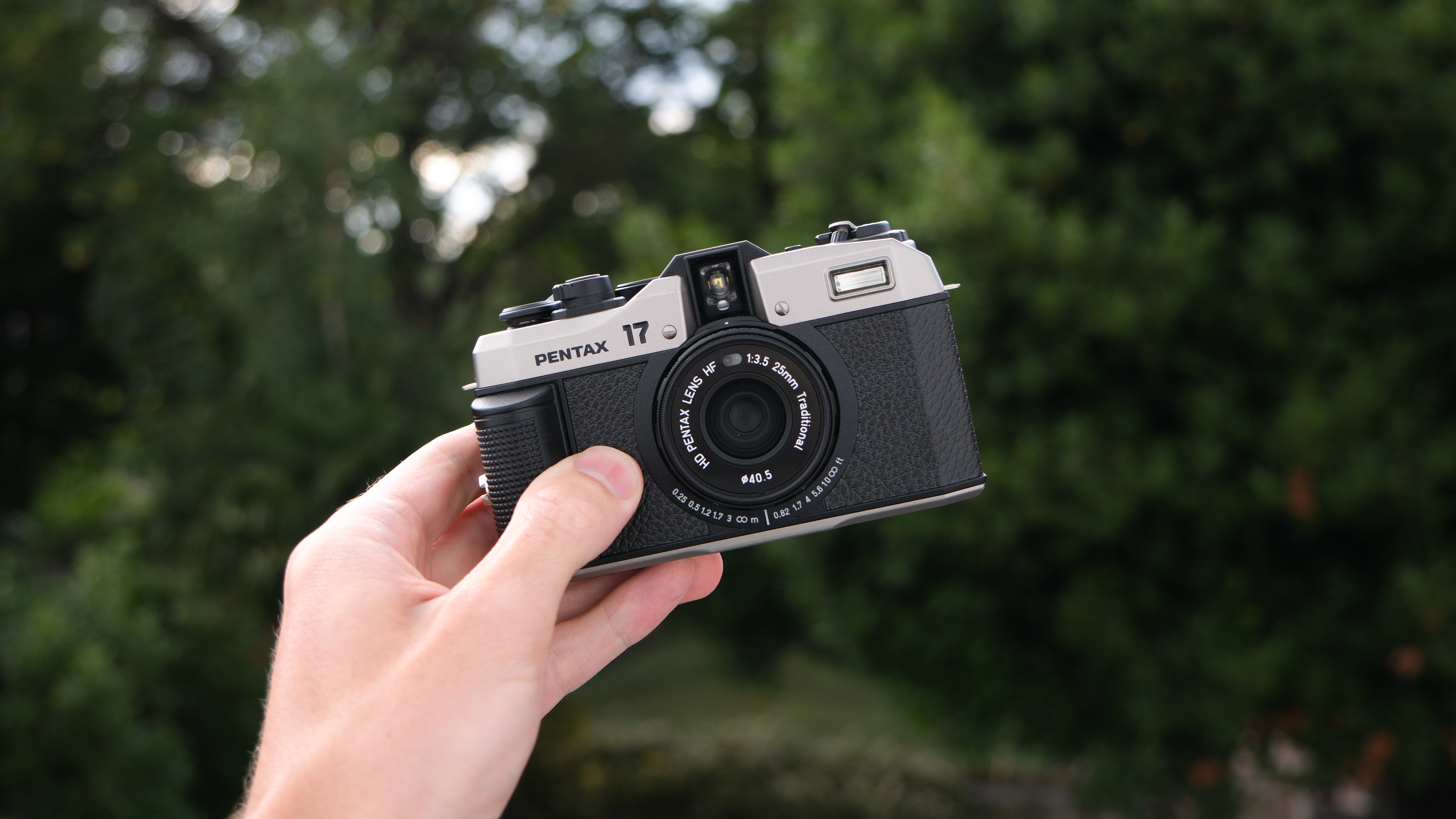Digital Camera World Verdict
This is the third Yongnuo prime lens for mirrorless cameras that we’ve reviewed, and we’ve been very impressed with all of them. Build quality feels solid and handling is refined, with the added attraction of a customizable function button. Image quality is very good in all respects, making the YN35mm an excellent choice for full-frame street photography and any time you need a moderately wide viewing angle coupled with the availability of a fairly fast f/2 aperture. It works equally well as a ‘standard prime’ with APS-C format Canon EOS R, Nikon Z and Sony E system cameras. It’s also great value at the price.
Pros
- +
Impressive image quality
- +
Good build and handling
- +
Great value for money
Cons
- -
No aperture control ring
- -
Mediocre narrow-aperture sharpness
- -
Poor autofocus unless firmware is updated
Why you can trust Digital Camera World
The Yongnuo YN35mm F2S DF DSM is one of a growing range of lenses from a company best known for its flashguns, triggers and photographic accessories. Like the Yongnuo YN50mm F1.8 DF DSM and Yongnuo YN85mm F1.8 DF DSM, the 35mm comes in both Sony E and Nikon Z mounts. The 35mm and 85mm are also available in Canon RF mount. In terms of design and construction, the 35mm is very similar to the other two ‘YN’ lenses, but has a moderately wide viewing angle on full-frame cameras and a slightly slower aperture rating that helps keep the size and weight down.
Specifications
Mount: Canon R, Nikon Z, Sony E
Full-frame: Yes
Autofocus: Yes
Stabilization: No
Lens construction: 9 elements in 8 groups
Angle of view: 52.9 degrees
Diaphragm blades: 7
Minimum aperture: f/16
Minimum focusing distance: 0.35m
Maximum magnification ratio: 0.13x
Filter size: 52mm
Dimensions: 67x72mm
Weight: 295g
Key features
The glass that’s featured in any lens is always a good place to start. This one has 9 elements arranged in 8 groups, including one aspherical element, one low-dispersion element and one high refractive index element. The combination aims to deliver good sharpness and clarity with minimal distortion and chromatic aberrations. Nano structure coatings are also applied to minimize ghosting and flare.
Unlike the array of fully manual lenses from various companies that are available for mirrorless cameras, the Yongnuo features a full set of electronics. It therefore works with a camera’s full range of PASM shooting modes and scene modes, where featured, with the aperture being controlled from the host camera. It also has ‘DSM’ (Digital Stepping Motor) autofocus that’s fast for stills and enables smooth, virtually silent focus transitions when shooting video.
Build and handling
Like other Yongnuo lenses in the range, this one has good handling characteristics. The focus control ring can be configured to apply a range of alternative functions when in autofocus mode, via in-camera menus. The same goes for the function button, which is nominally for autofocus-hold but can be customized for other uses. An AF/MF switch is also featured, which saves the need to delve into camera menus when you want to make a quick change.
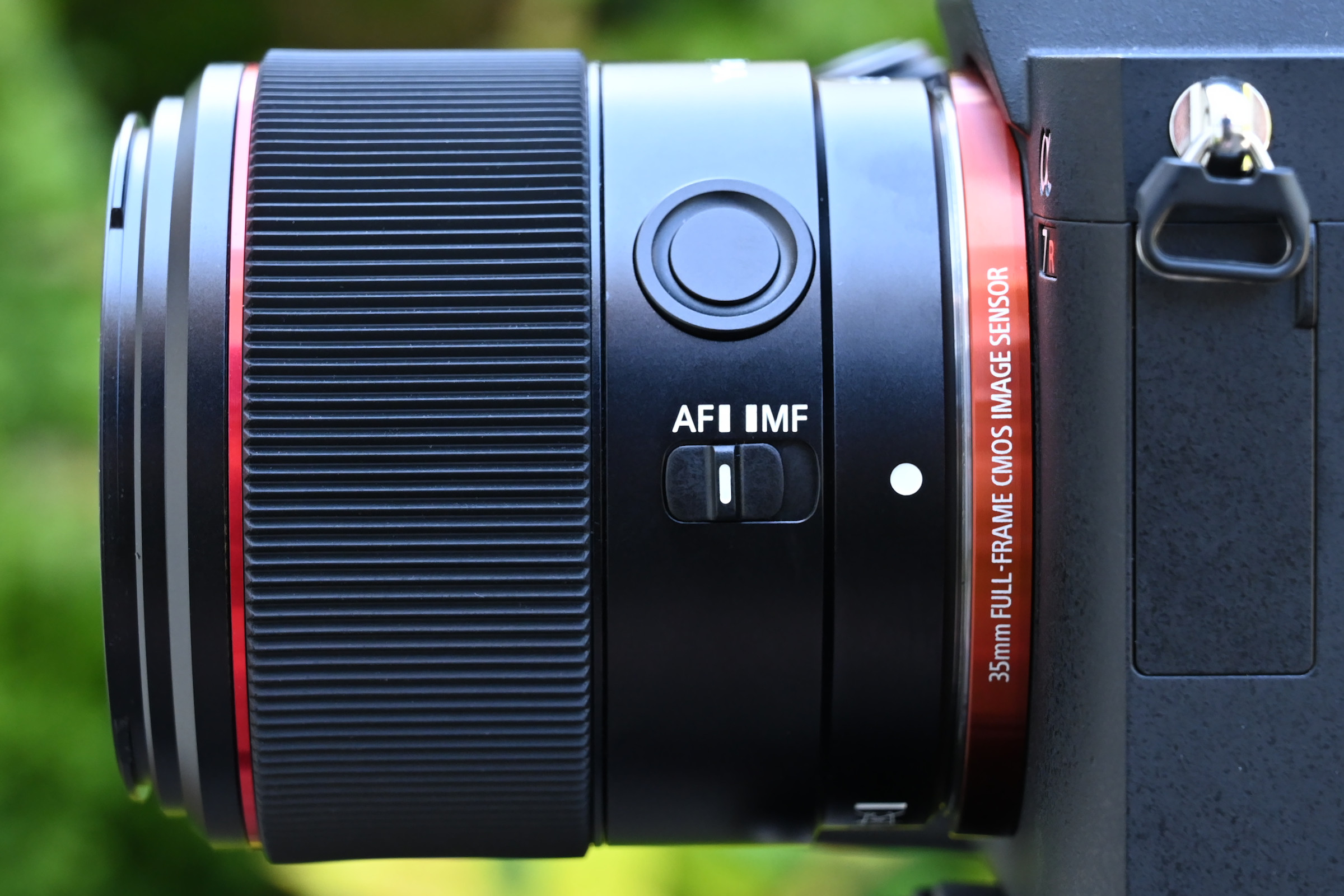
Build quality is good, with a tough yet high-precision feel to the construction. Further similarities with the YN50mm and YN85mm lenses include a chrome-plated metal mounting plate, gold-plated electronic contacts and a USB-C port for applying firmware updates if and when needed, which we’ll come to next.
Performance
Autofocus accuracy was frankly appalling in our initial tests, using the Sony E-mount version of the lens. In general shooting, we only got a hit rate of around 50 per cent with our A7R III body, autofocus frequently being way off. However, after the quick and easy application of a firmware update via the lens’s USB-C port, the issue was completely resolved and autofocus became consistently accurate.
Levels of sharpness are generally excellent, right across the entire image frame, even when shooting wide-open at f/2. Diffraction sets in at f/11, causing quite a drop in sharpness, which is further reduced at the narrowest aperture of f/16. The fairly short minimum focusing distance of 0.35m enables tight close-ups, in which bokeh is pretty good for a 35mm lens when shooting wide-open.
Barrel distortion is only minor, even when uncorrected in-camera. The same goes for color fringing at wide to medium apertures. It creeps up a bit at f/11-16 but not nearly as much as in the YN85mm F1.8 DF DSM lens. Overall performance and image quality are very impressive.
Sample images

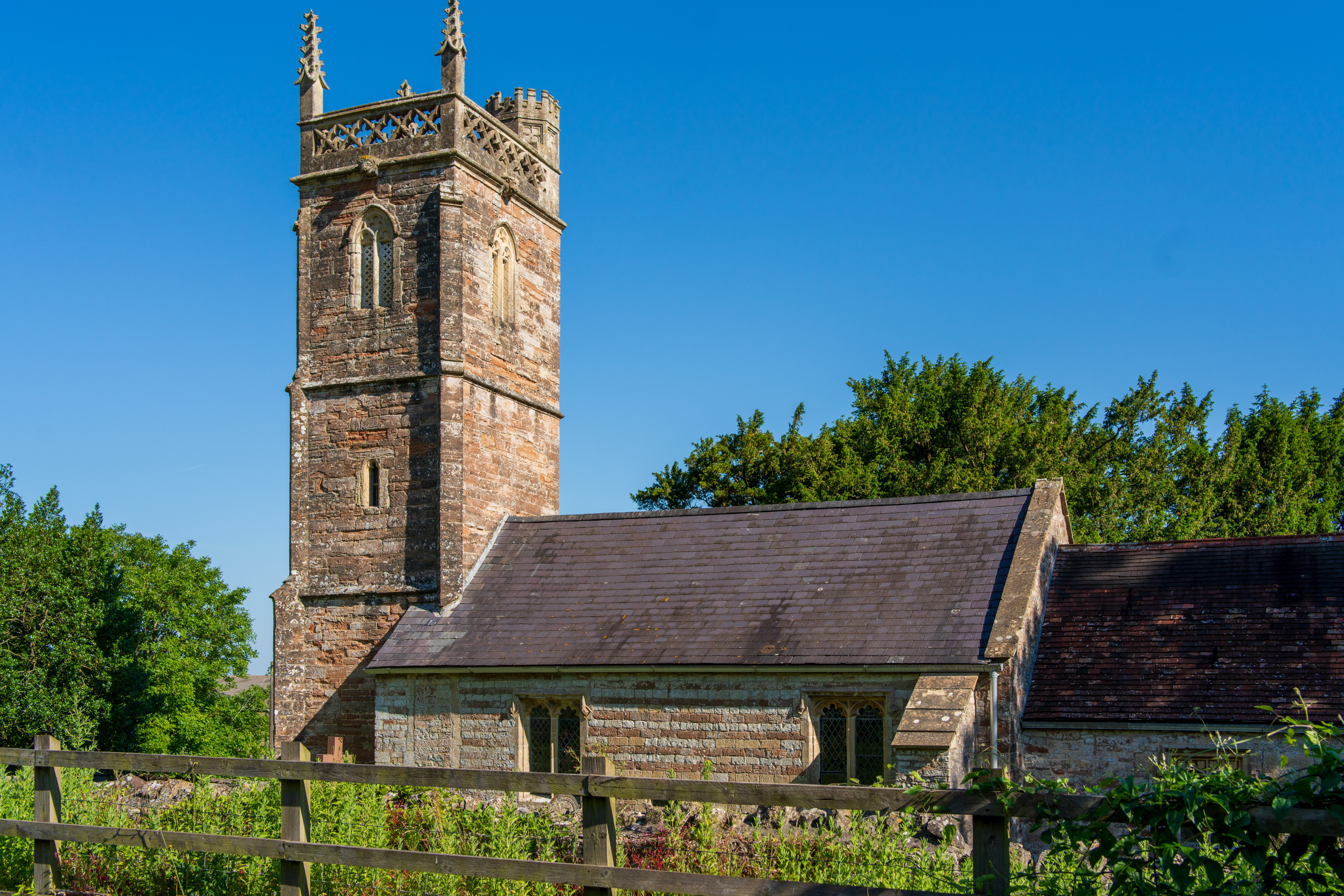

Lab results
We run a range of lab tests under controlled conditions, using the Imatest Master testing suite. Photos of test charts are taken across the range of apertures and zooms (where available), then analyzed for sharpness, distortion and chromatic aberrations.
We use Imatest SFR (spatial frequency response) charts and analysis software to plot lens resolution at the center of the image frame, corners and mid-point distances, across the range of aperture settings and, with zoom lenses, at four different focal lengths. The tests also measure distortion and color fringing (chromatic aberration).
Sharpness:
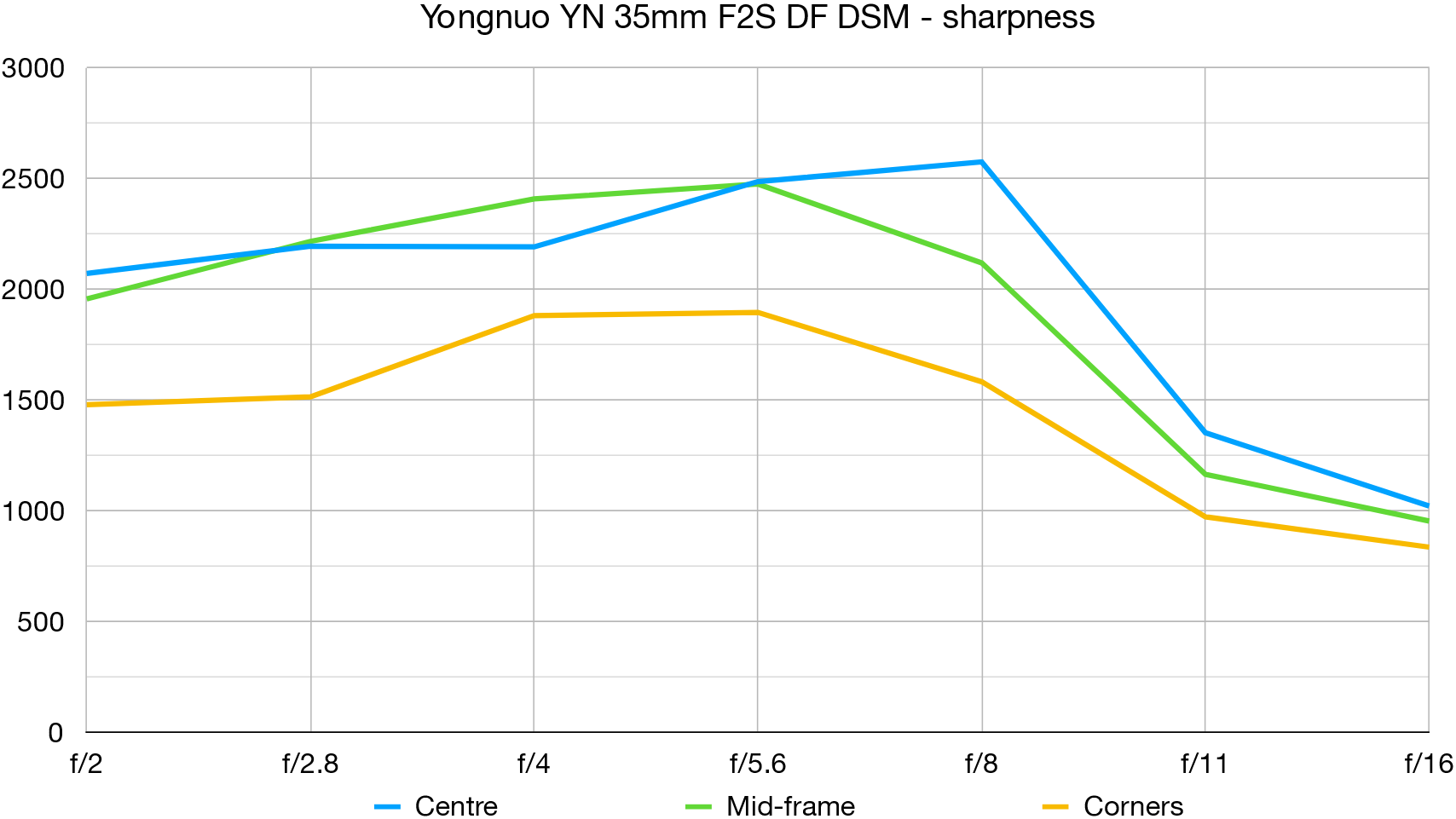
From the center of the frame to the extreme edges and corners, sharpness is excellent from f/2 through to f/8. It drops off at f/11, due to diffraction and becomes worse at the narrowest aperture of f/16.
Fringing:

There’s virtually no axial chromatic aberration or ‘bokeh fringing’ even when shooting wide-open at f/2. Lateral chromatic aberration towards the edges and corners of the image frame is only slight at apertures of f/2 through to f/8, becoming marginally worse at f/11 and f/16.
Distortion: 0.71
There’s a touch of barrel distortion when uncorrected in-camera but it’s very minor and will generally go unnoticed. That’s something we can’t say about many recent lenses designed for mirrorless cameras, which rely heavily on automatic corrections.
Verdict
This is the third Yongnuo prime lens for mirrorless cameras that we’ve reviewed, and we’ve been very impressed with all of them. Build quality feels solid and handling is refined, with the added attraction of a customizable function button. Image quality is very good in all respects, making the YN35mm an excellent choice for full-frame street photography and any time you need a moderately wide viewing angle coupled with the availability of a fairly fast f/2 aperture. It works equally well as a ‘standard prime’ with APS-C format Canon EOS R, Nikon Z and Sony E system cameras. It’s also great value at the price.
Read more:
• Best camera lenses to get
• Best Canon lenses
• Best Nikon lenses
• Best Sony lenses
Matthew Richards is a photographer and journalist who has spent years using and reviewing all manner of photo gear. He is Digital Camera World's principal lens reviewer – and has tested more primes and zooms than most people have had hot dinners!
His expertise with equipment doesn’t end there, though. He is also an encyclopedia when it comes to all manner of cameras, camera holsters and bags, flashguns, tripods and heads, printers, papers and inks, and just about anything imaging-related.
In an earlier life he was a broadcast engineer at the BBC, as well as a former editor of PC Guide.
